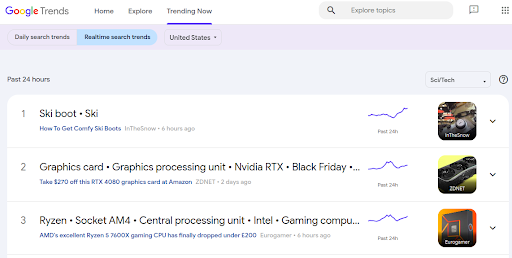
Many SEO professionals believe that Google loves news media sites for simply being news sites and that it doesn’t take a lot of effort to rank them well. However, as news media SEOs know, it’s only valid for media giants like CNN, BBC, or Forbes.
The rest of the news media sites must do much optimization work to increase their website traffic, get more subscribers, and grow revenue through ads.
To be successful, a news media outlet has to distribute its content across multiple social media outlets, including Google News. Google is transparent that Google News will stay a large part of the platform and spends a lot on resources to help news sites grow.
However, Google News is mainly for news discovery. To serve readers looking for a particular piece of news, you’ll have to invest in search engine optimization and rank on SERP.
This article will focus on the nine strategies that ensure your news media’s SEO success.
9 SEO Strategies for news and media
Some content you produce lends itself to discovery on Google News — topics that wouldn’t occur to many people to search for. Then, there are multiple news topics that people would search for.
SEO is the only way to get decent traffic to topics like these, and it can produce great results if done correctly.
The sheer amount of information produced distinguishes news SEO from optimization for other industries. For instance, The New York Times publishes hundreds of pages daily, and many smaller news sites don’t publish much less.
Each of those pages has to be optimized for SEO to have the chance to outrank the competition. Here’s how to do this.
1. Work on the crawl budget
Maintaining website technical health is vital for any website with thousands of pages. If your website is poorly optimized and you create hundreds of pages per day, fixing it becomes more challenging with each day that passes.
Many of your pages must rank as fast as possible while the buzz around that day’s news remains. This means the crawl budget is your priority. The crawl budget is the amount of resources Google allocates to crawling the pages of your site.
The faster your site responds and the fewer server errors it returns, the higher the crawl budget. If it’s slow or has a lot of mistakes, the crawl budget will decrease, and fewer pages will be crawled daily.
Run frequent website tech audits with SEO software like SE Ranking to avoid this. Their Website Audit Tool can weed out errors like 404 pages or excessive redirects, showing more on the website’s technical health.
For instance, it could show you detached pages no other page links to, meaning the crawlers won’t find it. It can also assess your website speed and server response time and suggest how to fix them.
2. Create an effective structure
A news platform with many pages needs a structure that makes it easy for users and Google bots to navigate. What this means in practice is creating logical categories and subcategories, placing articles in them, and making enough links pointing to those categories.
Navigation links are typically placed on the top of the page like this.

Source: The Sun
This is great for both crawler bots and users. You should also add breadcrumbs on article pages — navigation links that lead to subcategories and categories of the page. Another thing you could do is add links to the author pages of the articles.

Source: The Sun
If you add pagination to the category pages, use the <a href=”your-url”> for each next or previous page. Otherwise, it will be hard for Google to crawl these pages. If you’re loading content as an infinite scroll, Google might go down the page and see all the content. However, that does not always work, as crawlers may not imitate user behavior, like scrolling or clicking.
To ensure Google can see all pages of your site even without navigation, update and upload a sitemap regularly.
3. Insert internal links
Links are how we discover new things on the web and how Google discovers and rates the pages these links lead to. This is why linking to your news stories is crucial.
You would generally add links in the text of an article where it makes sense, but it’s also a common practice to have banners that lead to other articles on your site.

Source: The Sun
If you add links in this format, ensure you add text to those links, not just an image. This helps Google understand what the page is about.
While you should interlink your content as much as possible, you could place the links strategically. If you’re trying to rank a specific page, add multiple links from different pages. This serves as a small signal to Google that the page being linked to is essential and ensures more opportunities to discover it while going through your site.
4. Make your website mobile-friendly
As we live in a mobile-first world, a significant part of SEO for news sites is being mobile-friendly. According to Pew Research, 86 percent of US adults say they get their news on mobile often or sometimes. Not only do users find it helpful, but Google might also consider your site more SEO-friendly.
Regarding news site SEO, here are the main practices you should follow.
- Creating a responsive design that looks good on all screens and can be operated with a thumb.
- Decreasing the number of pop-ups.
- Improving loading speed, in some cases, by not loading certain elements on mobile.
- Collapsing the menu to a button.
- Loading the most important content first.
You should also consider using Accelerated Mobile Pages on your website, as these tend to work best on mobile platforms.
5. Do keyword research
Keywords, the search terms that people type into Google to find things, are also essential to optimize for. Some of your content will contain keywords organically, and you won’t have to worry about it. For instance, all news articles about the elections in the US will contain a variation of the keyword “US elections” naturally.
But for some other topics, especially the topics you want to try to rank for actively, the keywords are less obvious. You’ll have to figure out what those keywords are using specialized SEO tools.
You can start with a keyword idea and find concrete instances of the keyword you can include in your text to improve how the article ranks.
You can also use Google Trends to see the most trending topics.

Source: Google Trends
Take the topics from Google Trends, find the right keywords, and include them in the content you want to rank.
6. Avoid cannibalization issues
Cannibalization happens when multiple pages focus on the same keyword, giving Google a hard time understanding what page to show for that keyword. News sites typically have hundreds of pages that include a single keyword, and there’s no way you could change that reality. So, a part of SEO for news websites is working around that.
You can’t stop producing articles on a single topic as updates roll out, so your goal is to have a single page most suited for being ranked for that topic. The best way to do that is to pick a page that explains the topic fully and update it with new information. When you publish a new update on that topic, link from it to the main page, preferably using a short descriptive anchor text.
You can also create a hub page or a subcategory page for an important event.

Source: Google
Link to this page from all the news updates on your published topic to help it rank.
7. Create evergreen and valuable content
A lot of news stories are only interesting for a fleeting moment. In a few days, nobody would search for a news piece about something minor, so spending a lot of time optimizing news articles like these is a loss of resources.
But with many topics, people will search for them all the time. If you focus on creating evergreen articles and optimizing them, you’ll have a constant stream of traffic to direct to your news feed.

Source: Google
Do keyword research first and find a list of topics you can cover with high search volume. Then, create in-depth plagiarism-free content. Try to get some quotes from experts either by reaching out to them or using a service like HARO.
Optimize this content for the keywords, and you’ll have your article sitting on SERP and collecting traffic for your news site.
8. Optimize content for voice search
You might not use voice search yourself, but surveys show that 77 percent of people under 35 use it at least sometimes. This means voice search optimization should be included in SEO for news sites.
Luckily, many other SEO tips on this list also help voice search, including keywords and optimizing your site for mobile increases your chances of appearing in a voice search. Writing in a natural tone that people might use to ask questions in voice search also mostly comes naturally with news content.
One big thing that you could do in addition to all of this is to think of the questions people might have about the news piece and formulate short, concise answers. Voice queries are typically questions, and people want quick answers; that’s what you should give them.
Of course, this is better saved for those larger hub pieces or evergreen articles — you don’t have to enforce which are long expert articles or short news updates.
9. Analyze your SEO efforts
The most important part of SEO for news media is analytics. Measure your overall SEO and website performance before implementing changes and monitor how the changes affect your ranking positions, traffic, and revenue.
You should also monitor user behavior on the website to get more insight into how people interact with your site. Website Heatmap Tool will help to recognize common user behaviors by showing the most clicked elements on the site. Such analysis could increase time on site and bounce rate by improving the content or website layout.
Summary
This concludes the list of the best techniques in news SEO. Take them into your arsenal of marketing skills, implement them across your site, and see where they take your overall traffic. But don’t compromise too much on the other traffic channels.
If you don’t know where to start, start with doing competitor research. Figure out what your competitors do regarding SEO and what’s working for them. This can become the first driver of change for your website.




